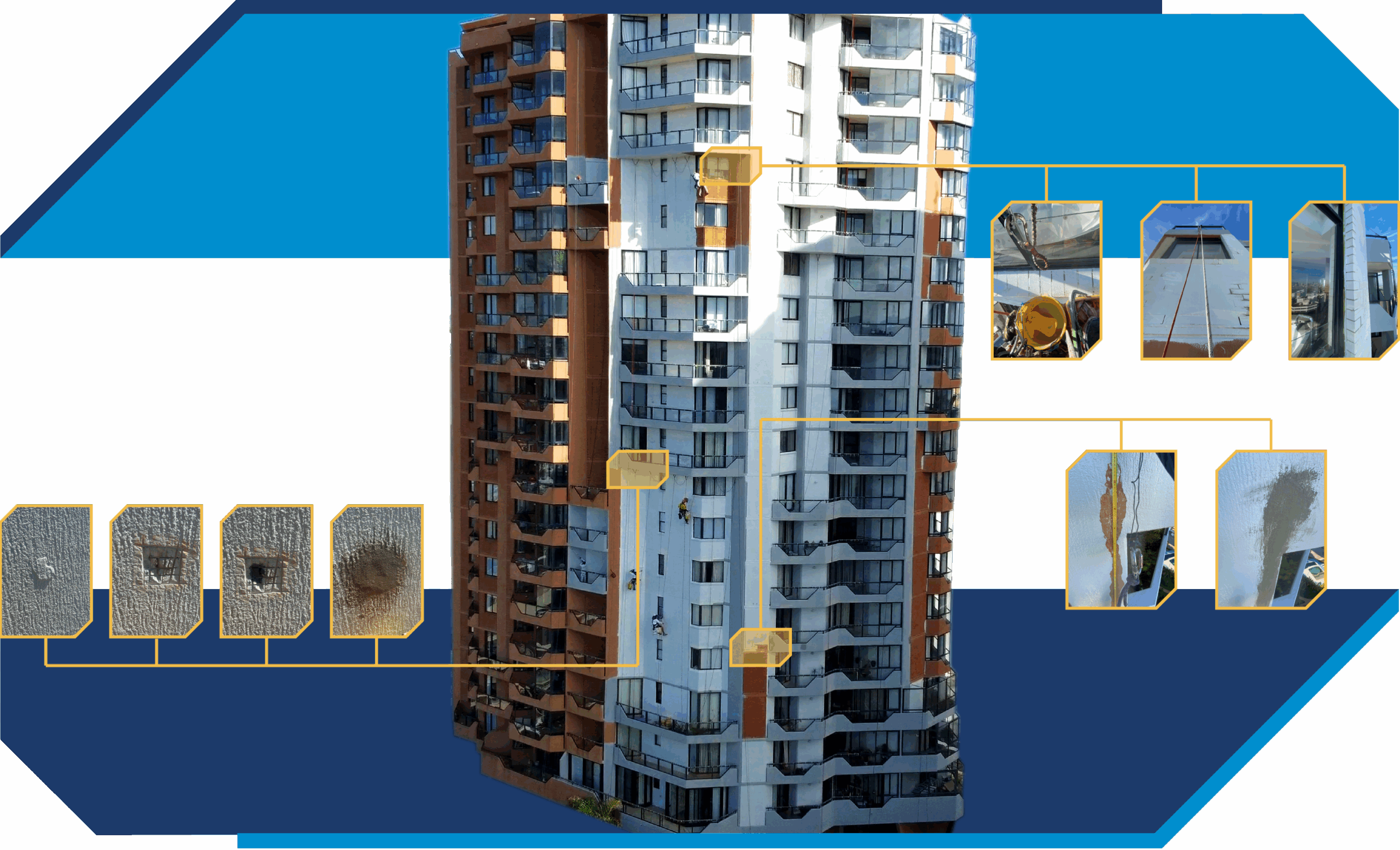Masonry façades are built to last but they’re not immune to wear, weather, and structural movement over time. From cracked mortar and water ingress to structural concerns and cosmetic damage, CPR delivers precise, scaffold-free repairs that extend the life of your façade and protect your asset.





Repointing involves the careful removal and replacement of deteriorated mortar between masonry units (typically brick or stone). This restores structural integrity, prevents water ingress, and improves the overall appearance of the façade. Our rope-access technicians carry out detailed repointing work, ensuring that joints are cleaned, matched, and finished to a high standard—without the need for scaffolding.

Cavity flashings are critical for redirecting water away from internal wall cavities and out of the building. If improperly installed, blocked, or deteriorated, they can lead to internal water damage and mould. We replace faulty cavity flashings with durable, modem materials while preserving the external finish of the wall, ensuring proper weep hole function and weatherproofing.

Brick stitching is a structural repair technique used to stabilise cracked masonry. It involves inserting stainless Steel rods into horizontal bed joints across cracks, binding the wall back together without full rebuild. This is a discreet, effective method to stop further movement and restore wall strength.
A mixed-use residential and hotel complex suffering from major water ingress. Moisture was entering living areas and bedrooms, with some units becoming uninhabitable due to mould and damp. CPR conducted a full façade audit, identified failed sealing and extensive concrete spalling, and delivered a complete remedial waterproofing program.

Full façade cleaning and preparation

Brick mortar repointing and Helifix bar installation

Render and concrete spalling repairs

Sealant renewal and waterproofing

Repainting of all previously painted external substrates

Metal surface painting and protection
Despite a 15-person crew on-site over a 25-week period, noise and disruption were kept to a minimum. The project benefited from seamless collaboration between the project consultant, engineering team, building manager, and owners committee—delivering a high-quality result with efficiency and care.







Repointing restores the mortar between bricks or stones, while brick stitching is a structural repair technique used to stabilise cracked walls. Stitching involves embedding steel bars across cracks to prevent further movement.

Absolutely. All masonry repairs (e.g., repointing, crack stitching, or joint replacement) can be completed Scaffold-Free using CPR’s rope access and patented systems like PEARS® and SkyPod® BRMW, ensuring minimal disruption.

Prolonged exposure to moisture can lead to several issues. Water seeps into cracks or porous brick and mortar, leading to efflorescence, mould growth, and over time, spalling where the surface of the brick begins to flake or crumble. Repeated wetting and drying cycles can also weaken mortar joints and allow structural movement.

Mortar is available in a wide range of colours, and at CPR we match the existing mortar as closely as possible to maintain the building’s original look. For heritage or decorative projects, we can customise colour blends to suit both modern and traditional finishes.

